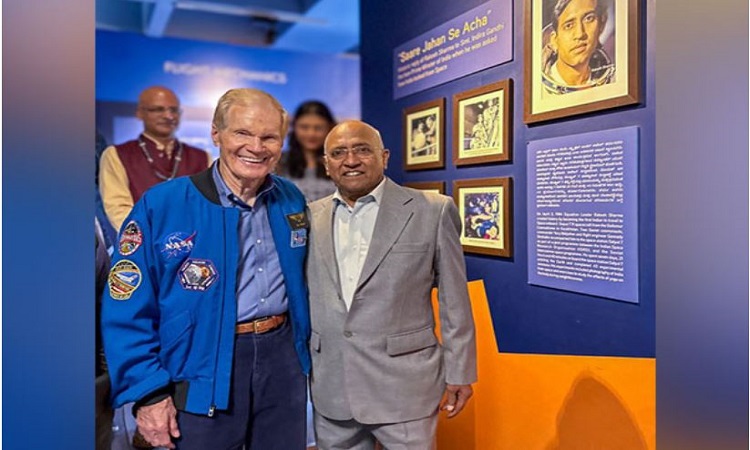
Bengaluru: NASA administrator Bill Nelson will visit ISRO today to see the low earth orbit observatory NISAR with India's first astronaut Rakesh Sharma.
Nelson will visit the UR Rao Satellite Centre (URSC) in Bengaluru, where the NASA-ISRO Synthetic Aperture Radar (NISAR) satellite is undergoing testing before its scheduled launch in 2024.
The NASA chief who is on a visit to India on Wednesday had an interaction with students of Visvesvaraya Industrial & Technological Museum (VITM) in Bengaluru on Wednesday.
NASA Administrator also noted how the upcoming joint NISAR mission, scheduled for launch in 2024 is just one example of how the US and India's partnership in space is helping people on Earth. Data from NISAR will help people worldwide better manage natural resources and hazards, as well as provide information for scientists to better understand the effects and pace of climate change.
Nelson announced that the US will help train and send an Indian astronaut to the International Space Station (ISS) by the end of 2024.
Meanwhile, ISRO chief S Somanath said, "It's an announcement based on our PM and President of the US meeting and this idea was mooted. We are taking it forward; that's what the NASA chief said--that Indian astronauts will be flying to the international space station in an American weight. The whole programme should be done in a manner that benefits us. We want our astronauts to be trained at US facilities."
Nelson's visit to India will fulfil a commitment as part of the US and India initiative on Critical and Emerging Technology initiated by President Joe Biden.
NISAR, a joint Earth-observing mission between NASA and ISRO will help researchers explore how changes in Earth's forest and wetland ecosystems are affecting the global carbon cycle and influencing climate change.
NISAR is also a joint mission by NASA and ISRO and when in orbit, its sophisticated radar systems will scan nearly all of Earth's land and ice surfaces twice every 12 days. The data it collects will help researchers understand two key functions of both ecosystem types: the capture and the release of carbon. (ANI)







